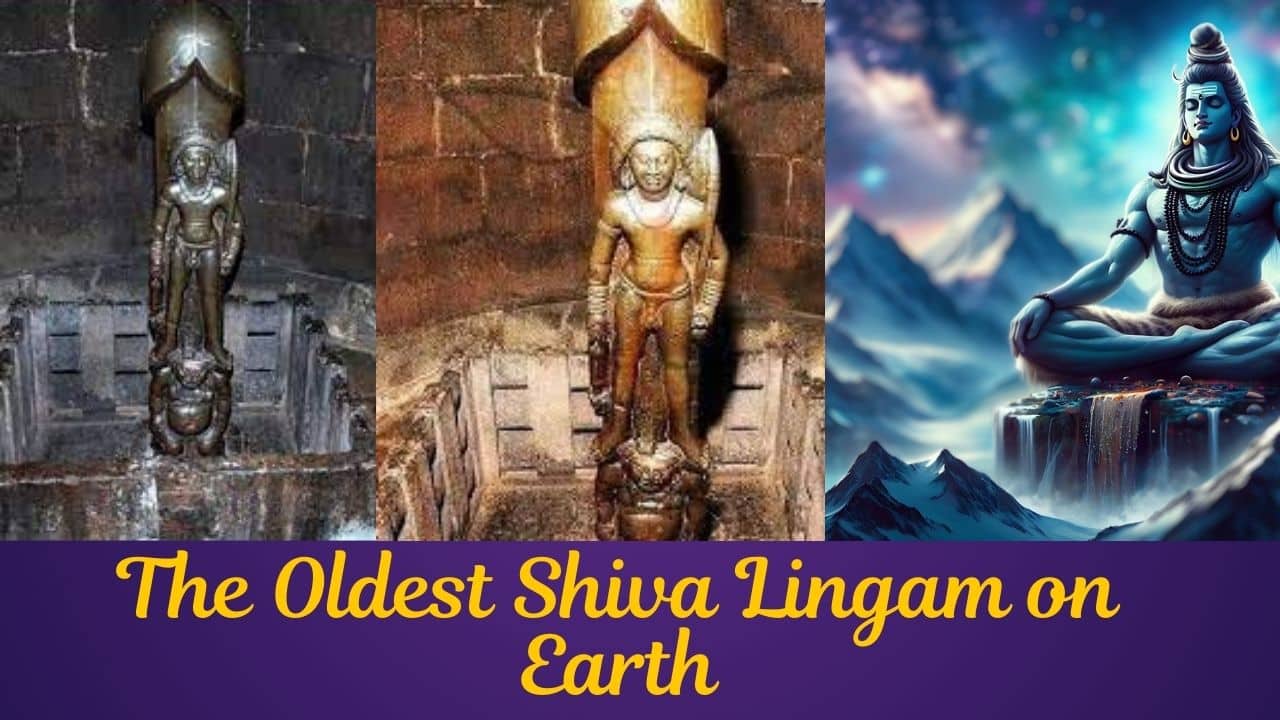Discover the Oldest Lord Shiva Lingam on Earth: A Journey Through Time, The divine and enigmatic Shiva Lingam holds a significant place in Hindu mythology and spirituality. Among the numerous Shiva Lingams scattered across the globe, one stands out as the oldest and most revered. In this blog post, we will explore the history, significance, and location of the oldest Lord Shiva Lingam on Earth.
Oldest Lord Shiva Lingam on Earth
Revealing the Oldest Shiva Lingam
The Gudimallam Lingam
The oldest Lord Shiva Lingam on Earth is believed to be located in the Parashurameshvara Temple in Gudimallam, a small village in the Chittoor district of Andhra Pradesh, India. This ancient Lingam, known as the Gudimallam Lingam, is estimated to date back to the 3rd century BCE, making it over 2,300 years old. Its unique features and historical significance have drawn the attention of historians, archaeologists, and devotees alike.
Unique Features of Gudimallam Lingam
What sets the Gudimallam Lingam apart is its distinctive anthropomorphic form. Unlike the conventional smooth cylindrical shape of most Shiva Lingams, the Gudimallam Lingam features a carving of Lord Shiva in a standing posture. This rare depiction of Shiva showcases him holding a pot of water in one hand and a battle-axe in the other, standing on a dwarf representing ignorance. This intricate carving is a testament to the advanced craftsmanship and artistic sensibilities of the period.
Historical Significance and Mythological Importance
The Gudimallam Lingam is not just an ancient artifact; it is a symbol of profound spiritual and cultural significance. According to Hindu mythology, the Lingam represents the cosmic pillar of fire, symbolizing the infinite nature of Lord Shiva. The Gudimallam Lingam, with its unique form, is believed to embody the divine energy and power of Shiva in a more personal and approachable manner.
The Parashurameshvara Temple : A Timeless Heritage Architectural Marvel The Parashurameshvara Temple, where the Gudimallam Lingam resides, is an architectural marvel of the Pallava dynasty. The temple’s intricate carvings and sculptures reflect the rich heritage and artistic achievements of ancient India. The temple complex, with its serene ambiance and spiritual aura, offers a captivating glimpse into the past.
Pilgrimage and Spiritual Journey
For devotees and spiritual seekers, a visit to the Parashurameshvara Temple is more than just a journey; it is an opportunity to connect with the divine. The temple’s serene environment and the powerful presence of the Gudimallam Lingam provide a perfect setting for meditation and contemplation. The temple attracts thousands of visitors annually, all seeking blessings and spiritual enlightenment.
The Significance of Shiva Lingams Across the World
Symbol of Divine Energy
Shiva Lingams are revered as symbols of divine energy and cosmic power. They represent the formless and infinite nature of Lord Shiva, the destroyer and transformer among the Hindu trinity. Worshiping Shiva Lingams is believed to bestow numerous spiritual and material benefits, including peace, prosperity, and spiritual liberation.
Cultural and Religious Importance
Shiva Lingams are not confined to India; they are found in various parts of the world, signifying the widespread influence of Shaivism. From the famous Amarnath Cave in the Himalayas to the ancient temples of Southeast Asia, Shiva Lingams have left an indelible mark on global spiritual and cultural landscapes.
Final Words
The oldest Lord Shiva Lingam on Earth, the Gudimallam Lingam, is a timeless symbol of faith, spirituality, and artistic excellence. Its unique features and historical significance make it a remarkable artifact that continues to inspire awe and reverence among those who visit it. The Parashurameshvara Temple, where it resides, offers a serene and spiritually enriching experience for all who seek to connect with the divine energy of Lord Shiva.
Whether you are a devotee, a history enthusiast, or a curious traveler, the Gudimallam Lingam and the Parashurameshvara Temple provide a profound glimpse into the rich cultural and spiritual heritage of ancient India. Embark on a journey to discover the oldest Lord Shiva Lingam on Earth and experience the timeless legacy of Lord Shiva.

How to Reach the Parashurameshvara Temple in Gudimallam
By Air
The nearest airport to Gudimallam is Tirupati Airport, which is approximately 30 kilometers away. From the airport, you can hire a taxi or take a bus to reach Gudimallam.
By Train
The closest railway station is in Tirupati, which is well-connected to major cities in India. From Tirupati Railway Station, you can take a taxi or a local bus to Gudimallam. The journey by road from Tirupati to Gudimallam takes about 45 minutes to an hour.
By Road
Gudimallam is accessible by road from various cities and towns in Andhra Pradesh. Regular bus services run from Tirupati and other nearby cities to Gudimallam. You can also drive to Gudimallam by taking the Tirupati-Puttur Road.
Temple Timings
The Parashurameshvara Temple in Gudimallam is open to devotees and visitors during the following hours:
Morning: 6:00 AM to 12:00 PM
Evening: 4:00 PM to 8:00 PM
It is advisable to visit the temple early in the morning or during the evening to avoid the heat and experience a more serene atmosphere. Special poojas and rituals are conducted during these times, offering a deeper spiritual experience for visitors
Pooja Details at Parashurameshvara Temple, Gudimallam
The Parashurameshvara Temple in Gudimallam, housing the ancient Gudimallam Lingam, is a site of significant religious activity. Devotees and visitors can participate in various poojas and rituals conducted regularly at the temple.
Daily Poojas
Suprabhata Seva (Morning Pooja):
Timings: 6:00 AM
This early morning pooja is conducted to wake up the deity and involves chanting of Vedic hymns and offering of flowers and incense.
Archana: Timings: Throughout the day during temple hours
Devotees can perform Archana, where the priest chants the name of the devotee along with the names of Lord Shiva, offering flowers, fruits, and other items to the deity.
Abhishekam:
Timings: 7:00 AM and 6:00 PM
Abhishekam is a ritual bathing of the Shiva Lingam with various substances such as milk, honey, curd, ghee, and holy water, symbolizing the purification and energization of the deity.
Special Poojas
Rudrabhishekam: Timings: Special timings on Mondays and during Pradosham (an auspicious time observed twice a month)
Rudrabhishekam involves the chanting of Rudra mantras from the Yajurveda while performing Abhishekam, believed to invoke the fierce form of Lord Shiva and grant blessings and protection.
Pradosha Pooja:
Timings: During the Pradosham period, which occurs twice a month on the Trayodashi tithi (13th day of the lunar fortnight)
This pooja is considered highly auspicious for seeking the blessings of Lord Shiva and involves special rituals and offerings.
Maha Shivaratri Celebrations:
Timings: All night on Maha Shivaratri, which falls in the month of February or March. Maha Shivaratri is an important celebration honoring Lord Shiva.
Festival Celebrations
Special poojas, lamps lighting (Deepotsavam), and various rituals are performed throughout the month, which is considered highly auspicious for Lord Shiva worship.
A grand celebration that includes processions, special poojas, cultural programs, and various religious activities over several days.
Advance Booking: For specific poojas like Rudrabhishekam and special rituals, it is advisable to book in advance at the temple office or online if available.
Offerings: Devotees can bring offerings such as flowers, fruits, milk, honey, and other items used in Abhishekam and poojas.
Dress Code: Traditional attire is preferred when visiting the temple and participating in rituals.
